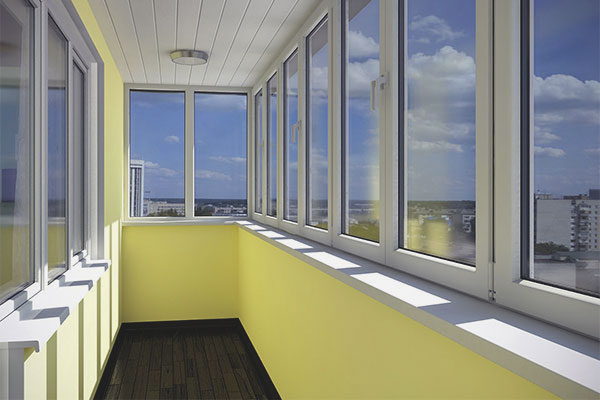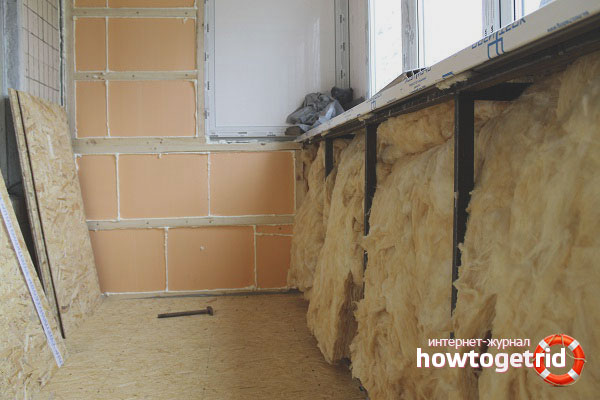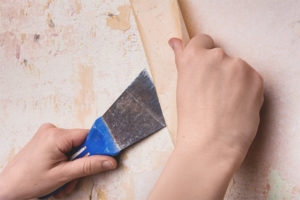The content of the article
Warming of a loggia allows to expand the area of its application considerably. From a place for storing old things and drying clothes, you can make a separate room or expand the area of the adjacent room. Warming loggias can be done with different materials, consider the most common.
Warming with penofola
This modern material is perfect for thermal insulation of the loggia in the panel house. Penofol has a very important advantage over other thermal insulation materials - small thickness. Insulation does not reduce the area of the loggia and allows you to save the maximum usable space.
Reflective foil is the main element of penofol, it prevents heat loss from the room, and also reflects it back, creating a thermos effect.
This heat insulator has many advantages:
- simple installation;
- low thermal conductivity in the range of 0.037-0.042 W / mK;
- reflections from 90% heat;
- high rate of elasticity;
- excellent noise insulation characteristics;
- moisture resistance;
- durability.
The disadvantage of the material can be called an increased cost.
Warming using penofola produced in the following sequence:
- No matter what kind of insulation material is used in the first place you need to install double-glazed windows, without which insulation would be useless.
- Before carrying out thermal insulation, it is necessary to clean the insulated surfaces - walls, ceiling and floor. All holes and slots are sealed with polyurethane foam or cement mortar.
- Fix the penofol on the wall and ceiling can be on screws, liquid nails and other suitable means. The best option is to fasten penofol with a construction stapler to the crate. Staples leave the least damage on the surface of the insulation. When installing penofol, the foil side should be directed to the room, because the main feature of this insulation is heat reflection.
- Penofol unlike membrane films for hydro- and vapor barrier is not mounted overlap.The material is joined, the gap is filled with mounting foam and glued with metallized adhesive tape.
- Thermal insulation of the ceiling is similar, penofol must be fixed with a bend on the wall in order to close the gap as much as possible and avoid cold bridges.
- Guides made of wood or metal are fastened to the penofol for fastening the finishing covering: PVC panels, MDF, kronospan or drywall, which will need to be plastered or wallpaper glued.
- It is desirable to warm the floor in combination with other heat-insulating materials - mineral wool or foam, which are covered with penofol and covered with boards, plywood or chipboard.
- Heated loggias are often made using floor heating systems. Electric mats at the same time stacked on penofol.
Loggia thermal insulation foam
Polyfoam is affordable and versatile, you can safely choose it for loggia insulation in a panel house.
- polyfoam is durable and moisture resistant;
- resistant to corrosive and chemical environments;
- it is easily processed, sawn, cut, polished;
- ease of mounting and installation;
- low weight;
- foam does not lose its insulating properties at critical temperatures and wet;
- the possibility of finishing the foam plaster compositions or facing materials.
Foam has few disadvantages, for example, it has low sound insulation properties. Also, the foam during a fire emits toxic fumes.
Installation of foam can be done in two ways.
You can quickly and easily warm the loggia using a wet method of installing foam plastic, for this you need:
- Clean the walls and ceiling;
- Prepare glue.
- Measure the area and cut the slab material;
- Apply the glue along the plate perimeter and dotted in the middle.
Attach the foam to the wall, check the flatness of the installation level of construction. The plates are mounted on the wall in the form of a brickwork, with mixing, as tightly as possible to each other.
Additionally secure the foam sheet on special plugs “fungi” or “umbrellas”. If joints have formed in some places, they are filled with foam.
Polyfoam can be plastered by pre-filling all the cracks and securing the construction grid. After hardening, the surface is completely leveled with a second layer of plaster.The surface is painted, covered with decorative plaster or wallpaper pasted over.
Installation of foam on the frame
The second version of the foam mounting is carried out on a pre-installed frame made of wooden beams or metal profiles. This method is similar to the technology of insulation using mineral wool plates and will be discussed in detail later.
Polyfoam excellent heat-insulating material which can be used as separately, and in combination with other heaters. For example, it is possible to warm and warm a loggia in a panel house in an effective and inexpensive manner as follows:
- the floor is insulated with mineral wool;
- pololok - penofol;
- walls - foam plastic with a minimum thickness of 75 mm.
Also sheets of foam can be further closed with penofol, increasing the heat insulating effect, although the cost of such insulation will increase.
Mineral wool for loggia insulation
Here is a list of the undeniable advantages of mineral wool, not counting the low cost:
- significant indicator of thermal conductivity - 0.035-0.046 W / mK;
- resistance to burning;
- good sound absorbing properties;
- the ability to pass pairs, the so-called "breathing" material;
- The presence of corrosive processes, resistance to mold and mildew.
The minus of mineral wool is the loss of performance when the material is wet or crumpled. Proper installation of mineral wool will avoid these problems.
Installing mineral wool includes the following steps:
- Marking is applied to the walls, taking into account the size of the slabs of mineral wool and the size of the profiles. If wooden bars are used for the framework, they should be soaked in an antiseptic.
- On small surfaces there are enough vertical slats, on large areas horizontal profiles are installed. The pitch of the profiles should correspond to the size of the slabs of mineral wool - it should fit into the frame tightly enough, but not too.
- Heater is laid in the frame, it can be additionally glued to a special glue.
- On top of the insulation is covered with vapor barrier, sheets of material are laid overlap and taped.
- For finishing, you can use various materials - panels, wall paneling, drywall and so on.
Video: loggia insulation with foam polystyrene













To send